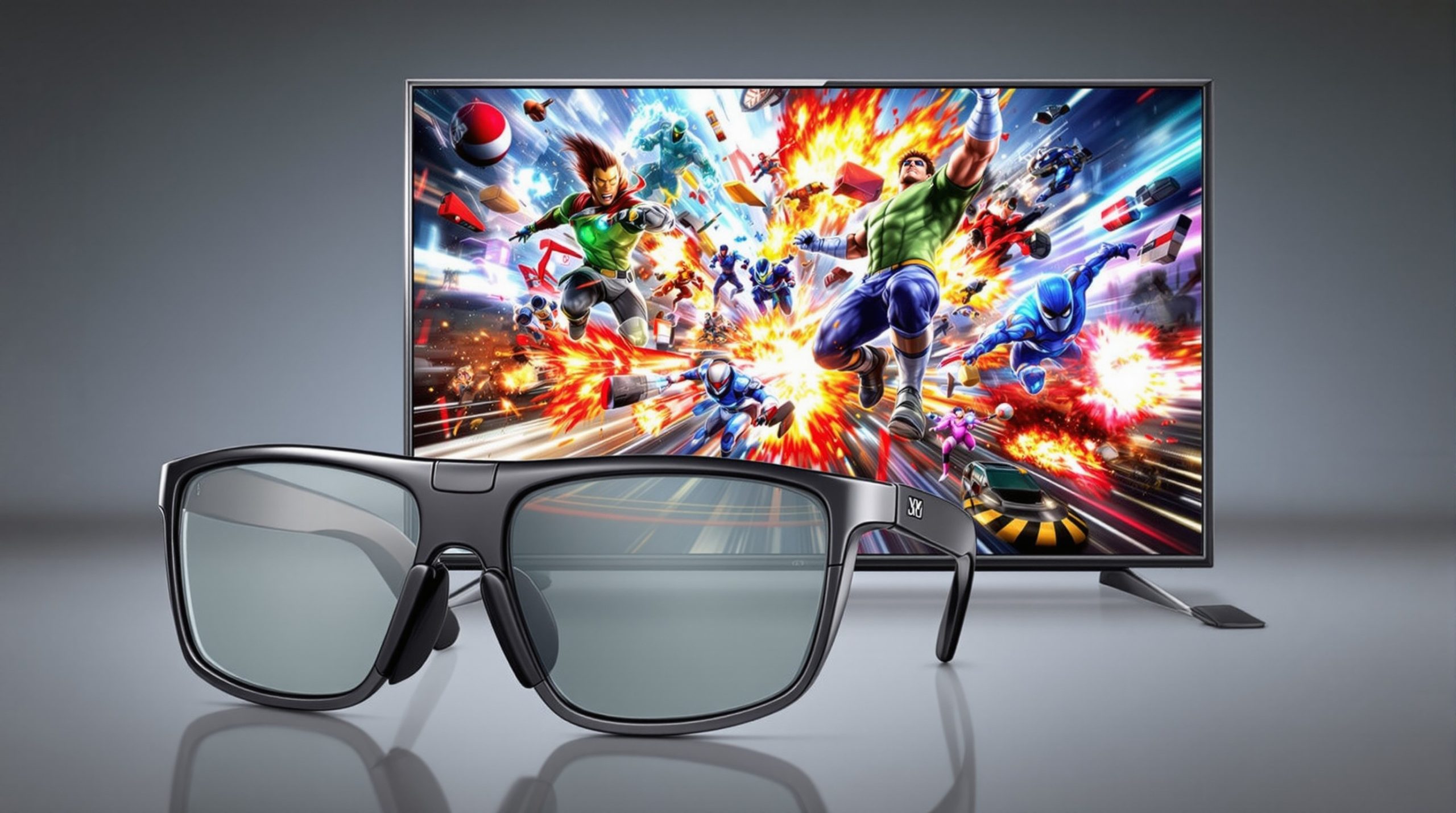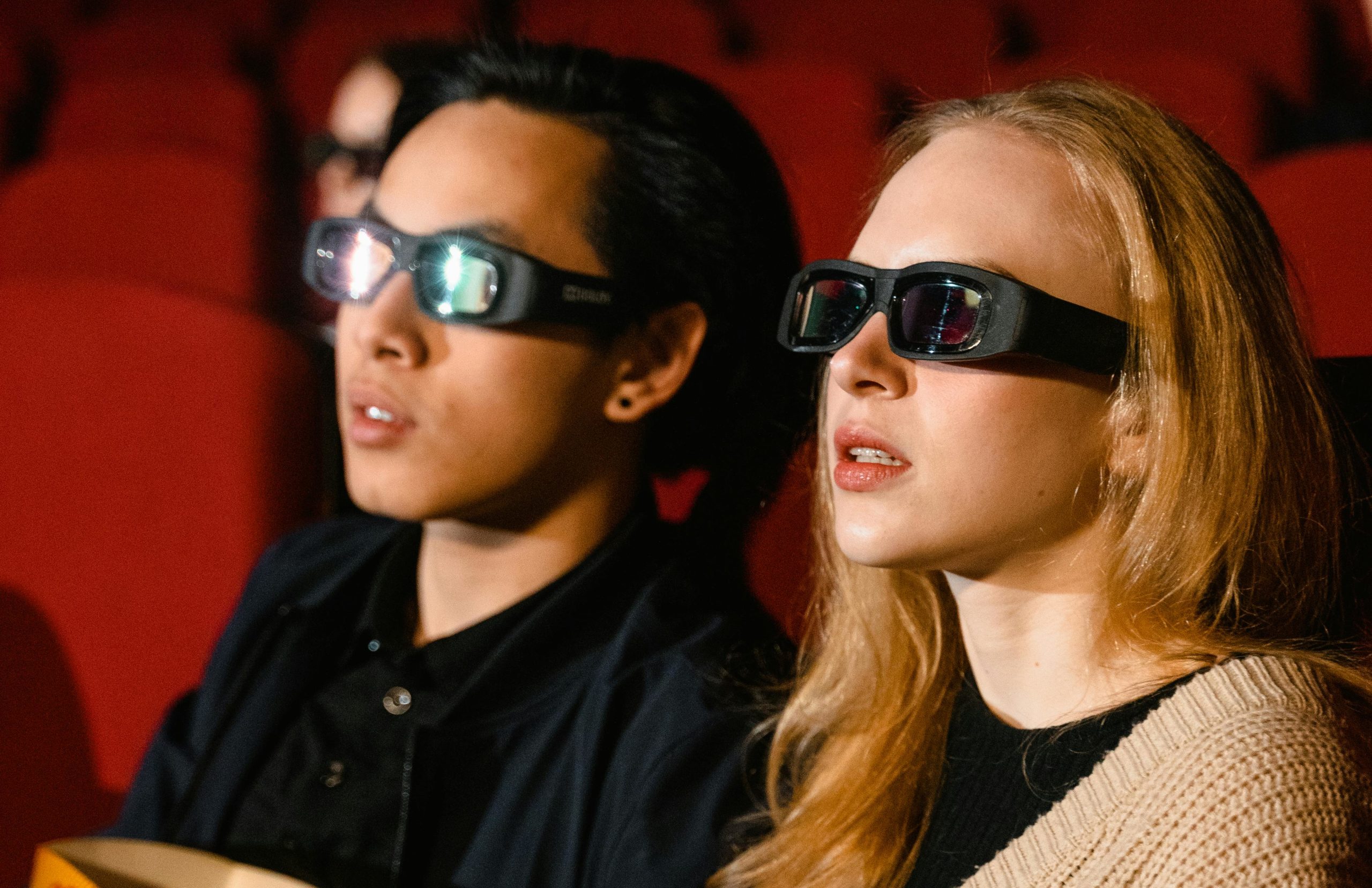3D TV Glasses – What You Need To Know
3D TV glasses use our inherent ability to perceive three dimensions through clever manipulation of optical signals. The two human eyes receive a slightly different projection of objects in real life. When both projections of an image are sent to the brain, it processes them to form a unified image with three dimensions. This is called stereopsis, and it gives humans the ability to perceive depth and distance in the real world.
3D TV glasses work on the same principle and provide each eye with a slightly different projection of the same image. The brain processes these projections in the same manner as it does even without the eyewear, and the result is 3D perception. The eyewear is capable of providing these image inputs to each eye by using some innovative optical techniques.
There are two main categories of 3D eyewear technology: passive and active. Passive 3D eyewear does not have to be powered on, while active 3D eyewear requires a power source and an electronic signal for viewing 3D content. There are two major types of passive eyewear for 3D viewing: anaglyph and polarized.
Passive 3D Eyewear – Anaglyph
Anaglyph 3D glasses are the classic, instantly recognizable type with two dissimilar colored lenses, usually paired as red and blue or red and green. This technology has been around for over a century, dating back to the earliest days of 3D photography and cinema. Typically, there will be two sets of the same image on the screen, offset from each other at a small angle. One image will have a red tint to it, while the other will have a blue tint.
The red lens on an anaglyph glass absorbs red light streaming from the television, canceling images with red tints and only showing blue-tinted images. The blue lens works in the opposite way, showing only red-tinted images. This way, the eye behind a red lens receives blue image input, while the eye behind a blue lens receives red image input.
Each eye sends only one image to the brain, which interprets that both eyes are focusing on the same object. When the brain processes the two sets of images, it creates one three-dimensional image with depth, similar to that of images seen in normal stereoscopic vision.
Anaglyph glasses are inexpensive and easy to produce, making them a popular choice for early 3D content, especially in print media and early home video releases. However, the main drawback is color distortion. Because each lens filters out certain colors, the resulting image often appears washed out or tinted, which can detract from the viewing experience.
Passive 3D Eyewear – Polarized
Polarized eyewear is another type of passive 3D technology, most frequently used in 3D cinema movies. If you’ve ever watched a modern 3D film at the theater, you’ve likely worn these lightweight, gray-lensed glasses.
The ideal way to achieve polarization of images with 3D technology for home use is through a projector with 3D capability. The projector should also support polarizing technology so that images formed on screen will have two sets of the same image, offset with each other.
The lenses of these 3D TV glasses have the ability to filter light waves from the screen that are polarized in a particular direction. Each lens lets through only those light waves that are polarized to be compatible with it, and as a result, each eye receives image inputs of only one set of on-screen images.
The benefit of using polarized lenses in glasses, as opposed to anaglyph ones, is that the former does not distort colors or affect color fidelity the way the latter does. This means you can enjoy vibrant, true-to-life colors while still experiencing the 3D effect.
There are two main types of polarization used: linear and circular. Linear polarization requires viewers to keep their heads level, as tilting can cause the 3D effect to degrade. Circular polarization, on the other hand, allows for more freedom of movement and is the standard in most modern 3D cinemas.
For home use, passive polarized 3D TVs became available in the early 2010s, with brands like LG and Vizio offering models that used inexpensive, lightweight glasses similar to those used in theaters. The main limitation was that these TVs often displayed only half the vertical resolution to each eye, which could result in a slightly softer image compared to active 3D systems.
Active 3D Eyewear
Active 3D eyewear with infrared sensors has been developed only in the recent past. This technology is more complex and typically more expensive than passive systems, but it offers some distinct advantages.
The sensors enable the glasses to connect with a display or television unit wirelessly. This, however, is possible only with 3D television units that support active 3D technology. Generally, two sets of the same image (offset slightly) are shown on the television screen with a small lag between them.
As on-screen images alternate, the lenses in the eyewear simultaneously alternate between turning opaque and transparent. So when the left eye’s image appears on screen, the right lens turns opaque, and when the right eye’s image appears on screen, the left lens turns opaque. However, as the images alternate at an extremely high speed and are timed perfectly with the eyewear, active 3D glasses users do not notice the flicker.
One important aspect of active 3D technology is that it reduces the effective refresh rate of the display. For example, when the original refresh rate of the display is 120 Hz, the sync signal is also locked at 120 Hz, but the right eye shutter blinks 60 times, as does the left eye shutter.
The number of 3D images perceived by the brain per second is halved, as two images on the display combine to make one 3D image. This was a significant hurdle in older television sets that had a low refresh rate, but in the latest LCD TV sets, refresh rates are high enough to give a seamless 3D viewing experience.
Active shutter glasses are powered by small batteries and contain liquid crystal layers in each lens that rapidly darken and lighten in sync with the TV. This technology allows for full-resolution 3D images to each eye, resulting in a sharper, more detailed picture compared to passive systems. However, the glasses are heavier, more expensive, and require regular charging or battery replacement.
3D Eyewear Compatibility
Many consumers have found, much to their annoyance, that glasses from one brand do not usually work with TV sets from a different brand. This may happen when eyewear and television sets are not compatible with each other, either because of different technology being used or because of a difference in the signal format.
3D TV glasses compatibility is a bigger issue for active 3D technology. Even if the technology used is the same, the electronics used in the synchronizing system could be different, making it impossible, or at least very difficult, for glasses from one brand to work with a TV set from a different brand. But if this electronic aspect is resolved through standardization, then it would not be difficult to ensure that active 3D TV glasses are compatible with different television sets.
As of now, this compatibility will not work in your living room. For example, a pair of Samsung glasses will not turn on in the absence of a sync signal broadcast by a Samsung television. Also, Samsung and Panasonic 3D eyewear have slightly dissimilar color filters in their lenses.
So even if users could synchronize their 3D glasses from one brand with the television set of another, the colors will be inaccurate as the color filters in the lenses will not work well with the signal from the display.
In 2011, several major manufacturers attempted to address this issue by forming the Full HD 3D Glasses Initiative, aiming to standardize active 3D glasses. While this helped somewhat, compatibility issues persisted, especially as manufacturers began to move away from 3D TV altogether.

Health, Comfort, and Practical Considerations
While 3D TV glasses can provide an immersive viewing experience, they are not without drawbacks. Some viewers report discomfort, including headaches, eye strain, or nausea, especially after prolonged viewing. This is often due to the brain’s effort to reconcile the artificial 3D effect with the actual focus of the eyes, a phenomenon known as the “vergence-accommodation conflict.”
Active shutter glasses, in particular, can be heavy and uncomfortable for long periods, and the flickering effect, while usually imperceptible, can cause fatigue in sensitive viewers. Passive glasses are lighter and more comfortable, but the reduced resolution can be a trade-off for some.
For people who already wear prescription glasses, wearing 3D glasses on top can be awkward. Some manufacturers have offered clip-on 3D lenses or prescription-compatible frames, but these are not always widely available.
The Evolution and Decline of 3D TV
When 3D TVs first hit the market in the late 2000s and early 2010s, they were hailed as the next big thing in home entertainment. Major manufacturers like Samsung, Sony, Panasonic, and LG invested heavily in 3D technology, and for a few years, 3D TVs were a prominent feature at electronics shows and in retail stores.
However, several factors contributed to the decline of 3D TV. The need for special glasses, limited content, compatibility issues, and the rise of other technologies like 4K and HDR all played a role. By the late 2010s, most manufacturers had stopped producing 3D TVs, and the technology became a niche feature rather than a mainstream selling point.
Despite this, 3D technology continues to thrive in cinemas, virtual reality, and specialized applications like medical imaging and scientific visualization.
The Future: Glasses-Free 3D and Beyond
One of the most exciting developments in 3D display technology is the advent of glasses-free 3D, also known as autostereoscopic displays. These screens use lenticular lenses or parallax barriers to direct different images to each eye, creating a 3D effect without the need for glasses. While early versions suffered from limited viewing angles and reduced image quality, recent advances have made glasses-free 3D more practical for certain applications, such as digital signage and handheld gaming devices.
Virtual reality (VR) and augmented reality (AR) headsets have also taken the concept of stereoscopic 3D to new heights, offering fully immersive environments with head tracking and interactive elements. While these devices still require specialized eyewear, the experience is far more engaging and interactive than traditional 3D TV.
Conclusion
3D TV glasses represent a fascinating chapter in the history of home entertainment technology. Whether passive or active, these devices harness the principles of human vision to create the illusion of depth and bring movies, sports, and games to life in a whole new way. While the era of 3D TV may have passed, the innovations it inspired continue to influence the development of new display technologies.
As we look to the future, the dream of immersive, glasses-free 3D experiences remains alive, driven by advances in display engineering, virtual reality, and beyond. For now, 3D TV glasses serve as a reminder of how far we’ve come, and how much further we have yet to go in our quest to bring the third dimension into our living rooms.
Read more about What is 3D TV and How Does 3D TV Work?

